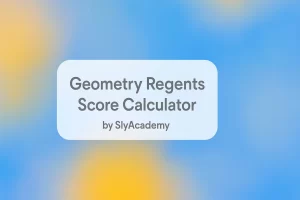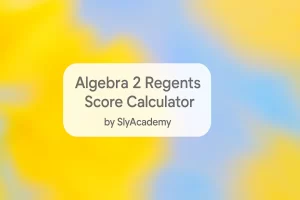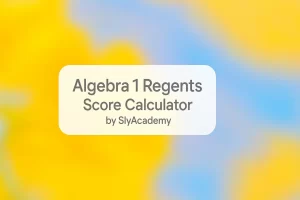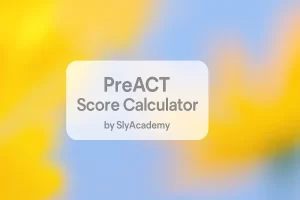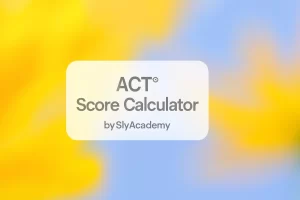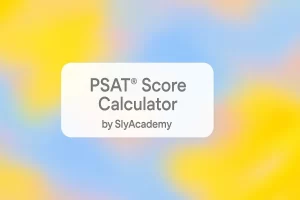Understanding Nonlinear Narrative Structures Like Flashbacks and Foreshadowing
Introduction
Most stories follow a linear narrative structure, meaning that events are presented in the order they occur. A traditional linear structure progresses chronologically from beginning to end, providing a straightforward and clear storytelling approach.
However, some of the most memorable and powerful stories employ nonlinear narrative structures. These structures break away from chronological order, weaving events in a way that influences tension, engagement, and the depth of character development.
In this guide, we will explore some of the most commonly used nonlinear narrative techniques, including flashbacks, foreshadowing, in media res, and stream of consciousness. By understanding nonlinear narrative structures like flashbacks and foreshadowing, readers and writers alike can appreciate the depth and complexity that these techniques add to literature.
What Is a Nonlinear Narrative?
A nonlinear narrative is a storytelling technique where events are presented out of chronological order. This method can be used to create suspense, develop deeper character arcs, or reveal critical information at strategic points in a story. Nonlinear narratives often challenge readers, requiring them to piece together different parts of the story like a puzzle.
Some of the most famous works in literature and film use nonlinear storytelling to enhance their themes and emotional impact. These methods keep readers engaged, making them active participants in uncovering the full story.
Flashbacks: Looking Into the Past
What Is a Flashback?
A flashback is when a story temporarily shifts to an earlier point in time to provide context, reveal a character’s past, or explain current events. Flashbacks are a powerful literary tool that allow the audience to gain insight into a character’s motivations and emotions.
Examples of Flashbacks in Literature
To Kill a Mockingbird by Harper Lee – The novel itself is structured as one long flashback, as Scout Finch recounts events from her childhood that shaped her understanding of morality and justice.
Wuthering Heights by Emily Brontë – The novel begins long after most of its events have occurred, with the story unfolding as one extended flashback, narrated by Nelly Dean.
The Great Gatsby by F. Scott Fitzgerald – Jay Gatsby’s backstory is revealed through a series of flashbacks, explaining his obsessive love for Daisy Buchanan and his ultimate downfall.
Why Use Flashbacks?
Flashbacks serve multiple purposes, such as:
Providing background information without starting the story from the very beginning.
Creating contrast between past and present, emphasizing character growth or change.
Enhancing suspense by delaying important revelations.
Foreshadowing: Hints of What’s to Come
What Is Foreshadowing?
Foreshadowing is a technique where an author hints at future events, preparing the reader for upcoming plot developments. These hints can be subtle or explicit, building anticipation and sometimes creating dramatic irony.
Examples of Foreshadowing in Literature
Romeo and Juliet by William Shakespeare – The Prologue explicitly states the fate of the lovers:
“A pair of star-cross’d lovers take their life; Whose misadventured piteous overthrows do with their death bury their parents’ strife.”
Julius Caesar by William Shakespeare – The soothsayer’s warning to Caesar, “Beware the Ides of March,” foreshadows his assassination.
The Secret History by Donna Tartt – The novel’s first sentence reveals a major character’s death, encouraging the reader to explore how and why it happened.
Why Use Foreshadowing?
Foreshadowing serves to:
Build suspense and create anticipation.
Enhance dramatic irony, as readers may understand things the characters do not.
Create a sense of cohesion, linking earlier moments in the story to later events.
In Media Res: Starting in the Middle
What Is In Media Res?
The Latin phrase “in media res” translates to “into the middle of things.” This technique involves beginning a story in the middle of the action, rather than at a traditional starting point.
Examples of In Media Res in Literature
The Odyssey by Homer – The story begins ten years into Odysseus’s journey home, before flashing back to earlier adventures.
The Divine Comedy by Dante – The story starts with Dante already lost in the dark woods of sin, rather than at the beginning of his spiritual journey.
Fight Club by Chuck Palahniuk – The novel opens with the narrator and Tyler Durden in a violent confrontation, before backtracking to explain how they arrived there.
Why Use In Media Res?
This technique can:
Immediately capture the reader’s attention.
Encourage readers to piece together missing details.
Create an immersive and unpredictable reading experience.
Stream of Consciousness: The Mind on the Page
What Is Stream of Consciousness?
Stream of consciousness is a narrative style that attempts to mimic the natural flow of a character’s thoughts. It often lacks clear structure, conventional grammar, and punctuation, reflecting the disorganized and spontaneous nature of human thought.
Examples of Stream of Consciousness in Literature
Ulysses by James Joyce – The novel’s last chapter, featuring Molly Bloom’s internal monologue, is one of the most famous examples of this style:
“…silly women believe love is sighing I am dying still if he wrote it I suppose thered be some truth in it true or no it fills up your whole day and life…”
Mrs. Dalloway by Virginia Woolf – The novel uses stream of consciousness to explore the inner lives of multiple characters in a single day.
The Sound and the Fury by William Faulkner – The first section of the novel, narrated by Benjy Compson, uses stream of consciousness to illustrate his fragmented perception of time.
Why Use Stream of Consciousness?
This technique:
Provides a deep, intimate look into a character’s mind.
Blurs the line between past and present, as thoughts naturally drift between memories and current experiences.
Makes reading an immersive experience, challenging but rewarding for the audience.
Conclusion
Understanding nonlinear narrative structures like flashbacks and foreshadowing allows readers to appreciate the deliberate ways in which authors shape their stories. These techniques—flashbacks, foreshadowing, in media res, and stream of consciousness—add layers of complexity, emotion, and engagement to a narrative.
Highly Trending FAQs on: Understanding Nonlinear Narrative Structures Like Flashbacks and Foreshadowing
Introduction
Nonlinear narratives are storytelling structures that deviate from the traditional chronological sequence. They enhance complexity, deepen themes, and create engagement by utilizing techniques like flashbacks, foreshadowing, parallel timelines, and fragmented storytelling. Understanding these techniques allows writers and readers to appreciate their impact on storytelling. Below are 50 frequently asked questions (FAQs) about nonlinear narrative structures, with detailed answers to improve comprehension and literary analysis.
1. What is a nonlinear narrative?
A nonlinear narrative is a storytelling structure where events are not presented in chronological order. This can include flashbacks, foreshadowing, multiple perspectives, or fragmented time sequences.
2. Why do writers use nonlinear storytelling?
Writers use nonlinear narratives to create suspense, provide deeper character insight, reveal thematic depth, or challenge traditional storytelling norms.
3. What is the difference between linear and nonlinear narratives?
Linear Narrative: Events unfold in a sequential, cause-and-effect manner.
Nonlinear Narrative: Events are presented out of sequence, disrupting the traditional flow of time.
4. What are the main types of nonlinear narratives?
Flashbacks (jumping back to past events)
Foreshadowing (hinting at future events)
Parallel timelines (two or more stories running simultaneously)
Reverse chronology (story told backward)
Fragmented storytelling (disjointed sequence of events)
5. What is a flashback in literature?
A flashback is a literary device where the narrative shifts to an earlier time to provide background information, character development, or insight into current events.
6. What are examples of flashbacks in literature?
The Great Gatsby (Nick recalls Gatsby’s past love story)
To Kill a Mockingbird (Scout’s childhood reflections)
One Hundred Years of Solitude (nonlinear family history)
7. How does foreshadowing work in storytelling?
Foreshadowing hints at future events through subtle clues, dialogue, or symbolism, creating anticipation and suspense.
8. What are common examples of foreshadowing?
In Romeo and Juliet, Romeo’s premonition about his untimely death.
In Of Mice and Men, George’s story about the dog foreshadows Lennie’s fate.
In Harry Potter, Trelawney’s prophecy foreshadows Harry’s final battle with Voldemort.
9. What is the purpose of nonlinear storytelling?
Nonlinear storytelling can mimic memory, increase suspense, highlight different perspectives, deepen emotional impact, and engage audiences in complex ways.
10. How does nonlinear storytelling affect reader engagement?
It challenges readers to piece together the plot, making the story more interactive and intellectually engaging.
11. What is in media res and how does it relate to nonlinear narratives?
In media res means starting a story in the middle of events rather than at the beginning, often requiring flashbacks to explain earlier occurrences.
12. What is reverse chronology?
Reverse chronology tells a story backwards, starting with the ending and working towards the beginning (e.g., Memento by Christopher Nolan).
13. How does nonlinear storytelling enhance character development?
By revealing past and future events out of order, nonlinear narratives allow deeper exploration of motivations, growth, and relationships.
14. What is a parallel timeline narrative?
A parallel timeline is a story structure where two or more timeframes unfold simultaneously, often converging at key moments (e.g., Cloud Atlas by David Mitchell).
15. How do flashforwards differ from flashbacks?
Flashbacks go back in time to reveal past events.
Flashforwards jump forward to future events, creating suspense.
16. What are examples of flashforwards in literature?
Slaughterhouse-Five by Kurt Vonnegut
A Christmas Carol by Charles Dickens (Scrooge’s vision of the future)
17. How does nonlinear storytelling impact pacing?
It alters pacing by delaying key plot points, creating tension, and forcing readers to actively engage with the structure.
18. How can nonlinear narratives be confusing?
If not executed well, nonlinear storytelling can disorient readers, create inconsistency, or weaken the emotional impact if key events feel disconnected.
19. How do authors signal time shifts in nonlinear narratives?
Through changes in verb tense, dates, shifts in perspective, visual markers, chapter breaks, or explicit time references.
20. What is the effect of fragmented storytelling?
Fragmented storytelling reflects memory, trauma, disorientation, or complexity, making narratives feel more immersive.
21. What is a nonlinear plot twist?
A twist where unexpected revelations alter the reader’s understanding of past events (e.g., Fight Club by Chuck Palahniuk).
22. How does nonlinear storytelling enhance mystery writing?
By withholding key details until later, nonlinear plots create suspense and encourage readers to piece together clues.
23. How do nonlinear structures affect theme development?
They allow themes to emerge through contrasts, repeated motifs, and shifting perspectives on past and future events.
24. What are nonlinear narrative techniques used in films?
Films like Pulp Fiction, Inception, and Memento use flashbacks, multiple timelines, and fragmented storytelling to create compelling narratives.
25. How do different cultures use nonlinear storytelling?
Many indigenous, Eastern, and postmodern narratives prioritize cyclical time, memory-based storytelling, and mythic structures over linear progressions.


